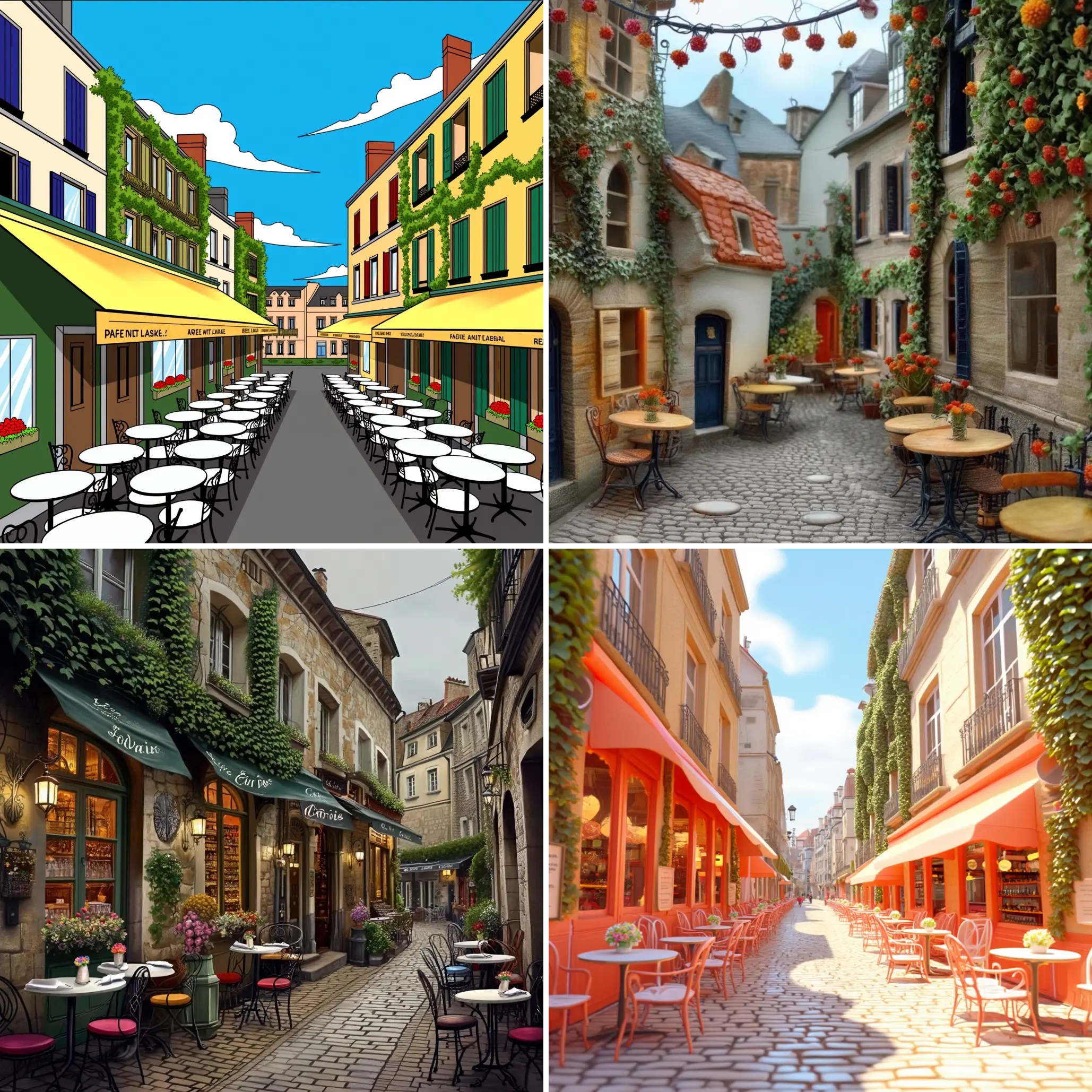ComfyUI Node: 🌊 MI2V Flow Animator
MI2V Flow Animator
Category🐓 IG Motion I2V Nodes/Flow
IDGallagher (Account age: 5765days) Extension
ComfyUI-IG-Motion-I2V Latest Updated
2024-09-30 Github Stars
0.04K
How to Install ComfyUI-IG-Motion-I2V
Install this extension via the ComfyUI Manager by searching for ComfyUI-IG-Motion-I2V- 1. Click the Manager button in the main menu
- 2. Select Custom Nodes Manager button
- 3. Enter ComfyUI-IG-Motion-I2V in the search bar
Visit ComfyUI Online for ready-to-use ComfyUI environment
- Free trial available
- 16GB VRAM to 80GB VRAM GPU machines
- 400+ preloaded models/nodes
- Freedom to upload custom models/nodes
- 200+ ready-to-run workflows
- 100% private workspace with up to 200GB storage
- Dedicated Support
🌊 MI2V Flow Animator Description
Sophisticated node for creating animated sequences from static images using advanced flow prediction techniques and deep learning models.
🌊 MI2V Flow Animator:
The MI2V Flow Animator is a sophisticated node designed to facilitate the creation of animated sequences from static images using advanced flow prediction techniques. This node leverages the power of deep learning models to generate smooth and realistic motion between frames, making it an invaluable tool for AI artists looking to bring their static creations to life. By utilizing a combination of prompts, flow samples, and image embeddings, the MI2V Flow Animator can produce high-quality video outputs that adhere to the artist's vision. Its primary goal is to streamline the animation process, allowing users to focus on creative aspects while the node handles the technical complexities of motion generation.
🌊 MI2V Flow Animator Input Parameters:
prompt
The prompt parameter is a textual description that guides the animation process. It influences the style and content of the generated animation, allowing you to specify the desired outcome. There are no strict minimum or maximum values, but the prompt should be clear and descriptive to achieve the best results.
first_frame
The first_frame parameter is a tensor representing the initial frame of the animation. It serves as the starting point for the animation sequence. The input should be a 3-channel image tensor, normalized to the range [-1, 1]. The dimensions of the image should be divisible by 8 for optimal processing.
flow_pre
The flow_pre parameter consists of flow samples that guide the motion between frames. These samples are crucial for determining the direction and magnitude of movement in the animation. The flow samples should be provided as tensors compatible with the device used for processing.
negative_prompt
The negative_prompt parameter allows you to specify elements or styles to avoid in the animation. It acts as a counterbalance to the main prompt, ensuring that unwanted features are minimized. Like the prompt, it should be clear and concise.
num_inference_steps
The num_inference_steps parameter determines the number of steps the model takes to generate the animation. A higher number of steps can lead to more refined results but may increase processing time. Typical values range from 50 to 100, with 75 being a common default.
guidance_scale
The guidance_scale parameter controls the influence of the prompt on the animation. A higher scale results in a stronger adherence to the prompt, while a lower scale allows for more creative freedom. Values typically range from 5.0 to 15.0, with 7.5 as a common default.
width
The width parameter specifies the width of the output animation frames. It should be divisible by 8 to ensure compatibility with the processing pipeline. The width is adjusted based on the input frame dimensions.
height
The height parameter specifies the height of the output animation frames. Like the width, it should be divisible by 8. The height is adjusted based on the input frame dimensions.
video_length
The video_length parameter defines the number of frames in the generated animation. It determines the duration of the animation sequence. The value should be set according to the desired length of the final video.
pos_image_embeds
The pos_image_embeds parameter consists of positive image embeddings that influence the animation's style and content. These embeddings help guide the model towards desired visual features.
neg_image_embeds
The neg_image_embeds parameter consists of negative image embeddings that help avoid unwanted visual features in the animation. They act as a counterbalance to the positive embeddings.
🌊 MI2V Flow Animator Output Parameters:
sample
The sample output parameter is a tensor containing the generated animation frames. It represents the final animated sequence, with each frame processed and rearranged for easy viewing. The tensor is typically in the format of (batch, frames, height, width, channels), ready for further processing or display.
🌊 MI2V Flow Animator Usage Tips:
- Ensure that your input images are pre-processed correctly, with dimensions divisible by 8, to avoid any resizing issues during animation generation.
- Experiment with different
guidance_scalevalues to find the right balance between adhering to the prompt and allowing creative freedom in the animation. - Use clear and descriptive prompts to guide the animation process effectively, and consider using negative prompts to avoid unwanted elements.
🌊 MI2V Flow Animator Common Errors and Solutions:
"Input dimensions not divisible by 8"
- Explanation: The input image dimensions must be divisible by 8 for the processing pipeline to function correctly.
- Solution: Resize your input images to ensure both width and height are divisible by 8 before feeding them into the node.
"CUDA out of memory"
- Explanation: The GPU does not have enough memory to process the animation with the current settings.
- Solution: Reduce the
num_inference_steps, decrease thevideo_length, or lower the resolution of the input frames to free up GPU memory.
"Invalid prompt format"
- Explanation: The prompt provided is not in a valid format or is too vague.
- Solution: Ensure that the prompt is a clear and concise textual description that accurately reflects the desired outcome of the animation.
🌊 MI2V Flow Animator Related Nodes
RunComfy is the premier ComfyUI platform, offering ComfyUI online environment and services, along with ComfyUI workflows featuring stunning visuals. RunComfy also provides AI Playground, enabling artists to harness the latest AI tools to create incredible art.


